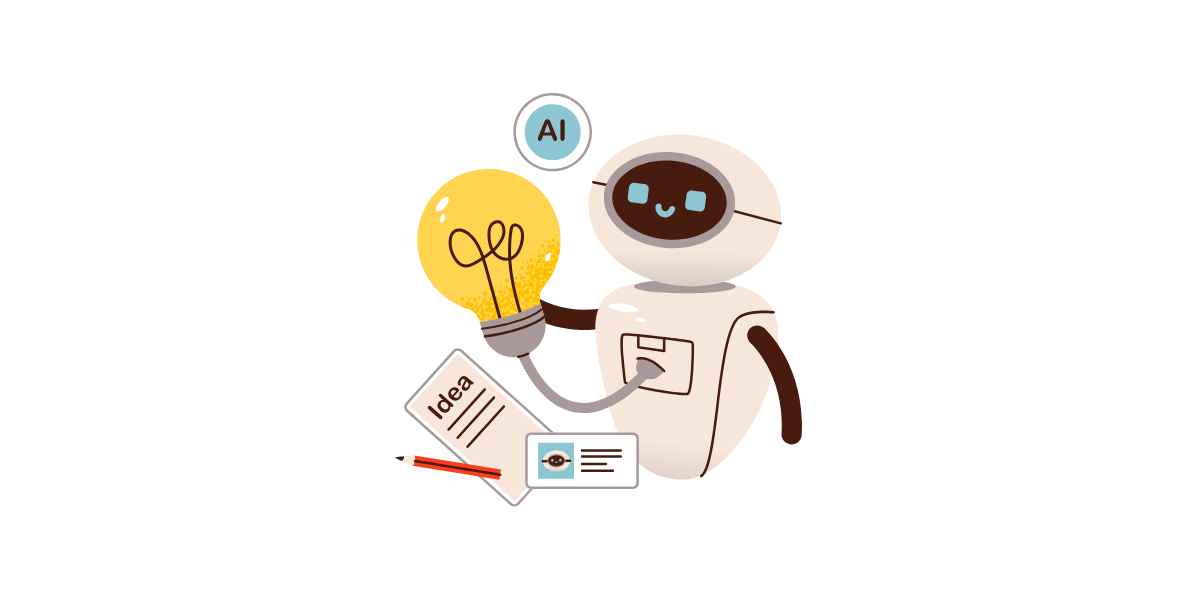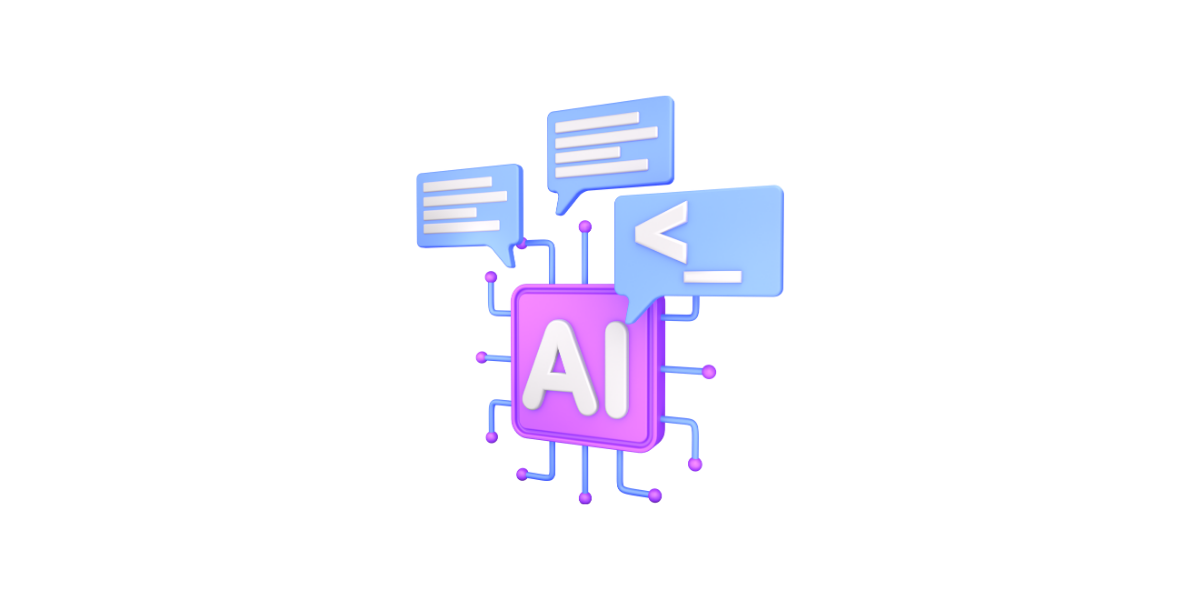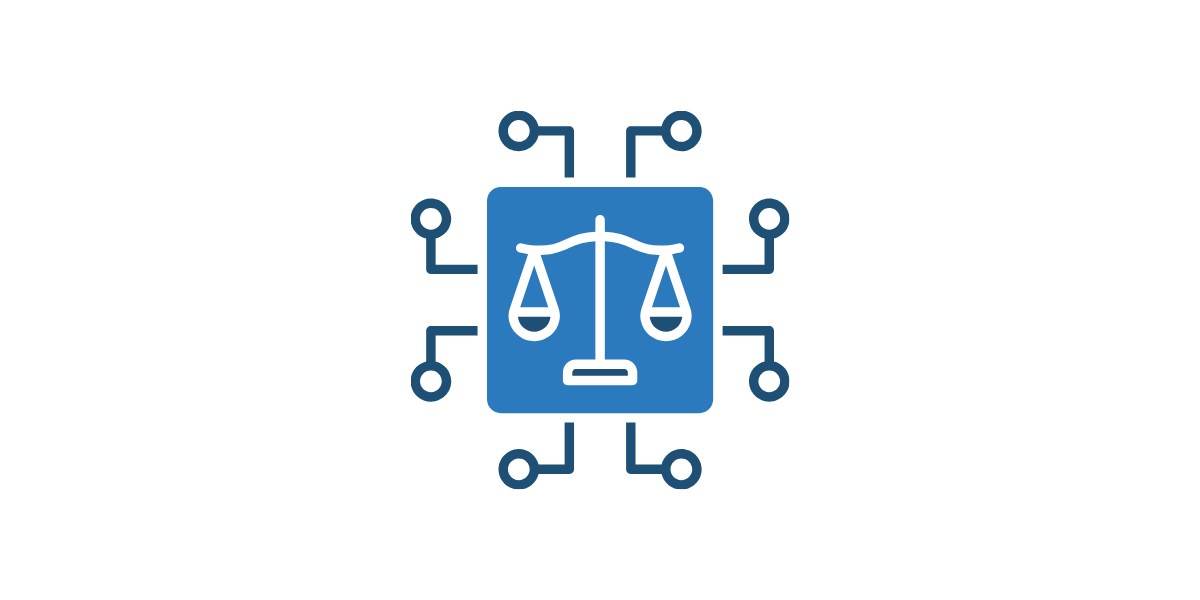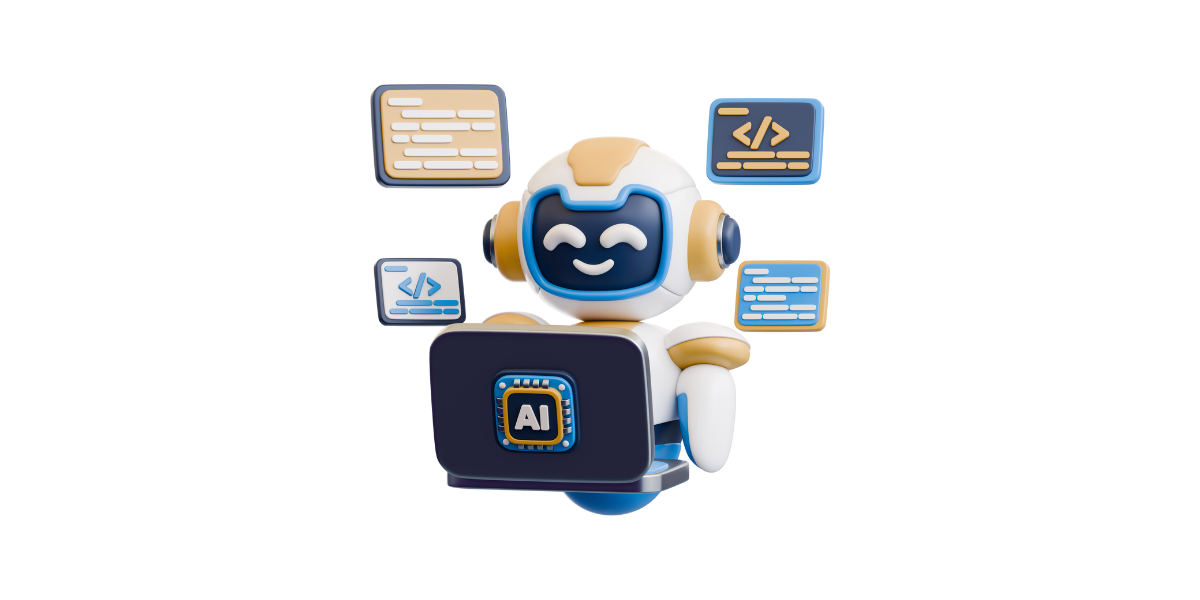
How can AI be used in public administration?
Digitalization is no longer a foreign concept in public administration - and yet many processes still feel like they used to: piles of paper on desks, duplicate data entry, long processing times. At the same time, citizens expect fast, digital services - preferably around the clock. This is exactly where artificial intelligence (AI) can make a real difference. In this article, we provide an overview of the topic and show how we support public administrations in the introduction of AI.
Whether sorting documents, answering citizens' queries or supporting decision-making, AI can significantly simplify and speed up administrative processes. Especially when dealing with citizens' questions and administrative issues, AI shows how efficient and citizen-oriented modern administration can be. It helps to reduce the workload of employees, use resources more efficiently and improve the quality of services.
We will show you how the use of artificial intelligence is seen as a key topic in public administration, provide an overview of the most important areas of application and explain the opportunities and challenges associated with it. We also take a look at the German government's AI strategy and show you how you can take the first step towards

What is artificial intelligence (AI) - simply explained?
Artificial intelligence - AI for short - refers to systems or applications that can perform tasks that would normally require human thought. This includes things such as recognizing patterns, understanding language, making decisions or drawing conclusions from data.
AI systems consist of various components such as algorithms, databases and models that work together to accomplish complex tasks. One example of this is large language models, which are advanced AI systems that can process and generate human language.
In other words, AI can process large amounts of data in a short space of time and helps computers to work more "intelligently" - in other words, not just to execute commands, but to learn from information and propose solutions independently.
AI systems such as chatbots or voice assistants interact directly with people and support them in making decisions, while humans retain control and responsibility.
Generative AI - when machines get creative
Generative AI is one of the most exciting developments of recent years. It can create content independently - texts, images, code or entire presentations. In public administration, for example, this can mean that formulation suggestions for letters to citizens are generated automatically or chatbots answer citizens' inquiries in natural language.
One example of generative AI that is already being used successfully in various public institutions is our AI application GPT4YOU.
Explainable AI
An important point when using AI in administration is transparency. Citizens and employees must be able to understand how an AI arrives at a decision. This is precisely where Explainable AI (XAI) comes in. This technology ensures that the way an AI works is understandable and verifiable.
With fraudify, we provide an AI tool that comprehensibly detects attempted fraud in the public and social sectors.

How can FIDA support administrations on the path to AI?
If you want to make your administration fit for artificial intelligence, FIDA is at your side as a reliable partner - from the initial idea to the actual implementation. First, we provide you with advice in which we examine your processes together, identify potential and find out where AI can bring real added value. We then support you in developing a strategy: we formulate a tailor-made roadmap, define goals, priorities and the necessary steps for your organization.
When selecting tools, we focus on independence - we check which AI technologies are suitable for you, which hosting and data protection requirements exist and which models can be used sensibly in your authority. With our own product GPT4YOU, we also offer you a proven platform that is specially tailored to public institutions - including flexible hosting, an accessible interface and data protection.
As soon as the technology is in place, we support you with the implementation: pilot projects, integration into existing processes, change management and monitoring. We also offer our own tools and solutions, for example for fraud detection or automated document processing, so you don't have to start from scratch.
And last but not least, we provide targeted training to ensure that your team understands the new possibilities, actively uses them and integrates them into their day-to-day work - so that AI doesn't just remain technology, but becomes a living part of your administration.

10 examples of AI applications in public administration
Artificial intelligence is increasingly being used in public administration, and rightly so, as the possible applications are diverse. Large language models (LLMs) in particular, such as GPT, offer completely new perspectives here. For example, they can help to answer citizens' inquiries automatically, create draft texts for notices or letters or analyze legal documents more quickly. This reduces the workload of employees and speeds up processes.
1. automated response to citizens' enquiries
Whether questions about deadlines, forms or procedures - AI-supported chatbots based on language models such as GPT can answer citizens' inquiries around the clock. They reduce the workload of service centers, shorten waiting times and ensure better communication with citizens. Employees remain in control at all times and can intervene in more complex cases.
2. support with text and document creation
LLMs can prepare entire letters, reports or notices - for example by suggesting wording, summarizing or automatically translating them. This saves time, ensures consistent texts and is particularly helpful when legal requirements or technical language need to be taken into account.
3. intelligent document processing
With AI, incoming documents can be automatically analyzed, classified and forwarded to the right place. For example, an AI can sort incoming mail by topic, read invoices or assign attachments to a process. This makes day-to-day administration much more efficient.
4 Knowledge management and internal training assistance
AI can be used as a personal learning or knowledge assistant: Employees ask questions about internal guidelines, laws or IT applications - and immediately receive a comprehensible answer. In combination with training platforms, AI can also suggest individual learning paths and make knowledge available throughout the company.
5 Automated creation of minutes and summaries
At meetings, workshops or project meetings, KI can automatically capture and structure notes and summarize them into comprehensible minutes. This saves time and ensures that no important points are lost.
6 Fraud detection and data analysis
Prevention is crucial, especially in sensitive areas such as funding allocation, billing or procurement. AI systems can recognize suspicious patterns in data and thus point out possible fraud attempts at an early stage. Solutions such as FIDA image forensics can also uncover manipulated evidence, invoices or photos - a decisive contribution to the integrity of public processes.
7. support for decision-making processes
Explainable AI can provide a transparent basis for decision-making - for example through data analyses, forecasts or scenario comparisons. This allows employees to retain control but make informed decisions more quickly.
8. citizen-oriented communication and accessibility
AI can break down language barriers, simplify texts and automatically translate content into plain language or different languages. This makes administrative language easier to understand and more accessible - a real added value for all citizens.
9 Automated quality assurance and error checking
AI systems can check applications or forms for missing information, implausible values or formal errors before they are processed further. This reduces queries and speeds up the entire administrative process.
10 Predictive analytics for planning and resource management
AI can be used to evaluate data in order to identify trends - for example in personnel requirements, incoming applications or maintenance cycles. This enables predictive action and more efficient resource planning.

Which AI applications and AI tools are suitable for public administration?
Targeted use of LLMs
There is particularly great potential in large language models (LLMs) - i.e. language models that not only understand and generate texts, but can also automate entire work processes. With their ability to combine natural language understanding with data processing, administrative tasks such as application processing, knowledge management, protocol creation or internal communication can be significantly simplified. For example, an LLM can evaluate applications, merge information from different documents, generate recommendations for action or trigger routine tasks automatically.
With GPT4YOU, FIDA offers a platform that provides administrations with precisely this access. It can be connected to all leading AI models - including OpenAI, Gemini, Mistral and others - while offering full control over data protection, hosting and access rights. Whether cloud-based or locally operated: GPT4YOU makes it possible to use AI solutions securely, scalably and adapted to the needs of public institutions. This makes AI a genuine component of digital administration - not just as a tool for texts, but as an intelligent interface for entire process chains.
Fraud detection with fraudify - security through AI
In addition to process automation, AI-supported fraud detection is playing an increasingly important role in the public sector. With fraudify, the image forensics solution from FIDA, manipulated evidence or forged documents can be reliably detected - for example in funding applications, benefit statements or damage reports. The system automatically checks image data, recognizes processing traces, compares metadata and thus uncovers discrepancies that would be almost impossible to detect humanly. This enables administrations to identify risks at an early stage, prevent misuse and strengthen trust in digital processes.

Opportunities of AI in public administration
AI offers public administration the chance to finally achieve what many have long wished for: more time for the essentials. Routine tasks that still take up a lot of energy today - searching for information, checking documents, answering the same queries over and over again - can be taken over or at least prepared for by AI systems. This frees up time for tasks where humanity, experience and intuition count - for example in direct contact with citizens or when making complex decisions, where automation through AI can reduce the error rate.
At the same time, AI helps to make processes more transparent, faster and more citizen-friendly. It can make decisions comprehensible, simplify processes and even help to avoid errors. For you as an employee or decision-maker, this means less administrative work, less paper and more focus on quality instead of bureaucracy. And perhaps most importantly, AI can help to position public administration as a modern, attractive employer that actively uses the opportunities of digitalization instead of just discussing them.

What should be considered in an AI strategy in the public sector?
If you're thinking about using AI in a targeted way in your authority, it's like a little journey - and it takes more than just technology to make it a success. First of all, you should define a clear vision and a goal: What do you want to achieve with AI? More efficient processes, better citizen services, shorter decision-making paths? Without a concrete goal, AI can easily come to nothing.
An AI strategy is more than just a checklist; it defines how AI will be integrated into the administration in technical, organizational and cultural terms.
Data and infrastructure preparation is also crucial. AI depends on data - its availability, quality and structure. If, for example, old systems come to nothing, data is not consistently accessible or processes cannot be automated, then the introduction of AI becomes unnecessarily difficult. Without a clear foundation, isolated solutions quickly emerge that are hardly usable later on - and this is especially true for the public sector with its high demands on security and traceability.

How can administrations comply with the GDPR and the EU AI Act?
When introducing AI in your administration, it is essential to comply with the legal framework - in particular the GDPR and the new EU AI Act. The latter places particular emphasis on due diligence: Authorities must ensure that AI systems work reliably, traceably and securely, that risks are assessed and that measures are implemented to minimize wrong decisions or discrimination. This obligation begins with the selection of models and data and continues with the implementation and training of employees.
In practice, this can be achieved by integrating data protection and compliance into the AI strategy from the outset, using the right AI tools and training your employees accordingly. With our AI solutions, you can ensure that all data is processed in compliance with the GDPR, while your employees learn everything they need to know about using AI in the FIDAcademy.
The German government's AI strategy - a clear course for the public sector
In November 2018, the German government adopted its strategy on artificial intelligence with the aim of establishing Germany as a leading location for AI.
A central concern of this strategy is the responsible development and use of AI for the common good. This includes promoting research and innovation, expanding data infrastructures and ensuring transparency and ethical responsibility in the use of AI systems.
For administrations, this means that they must not only implement technological innovations, but also take into account the social and ethical implications of AI. The strategy thus lays the foundation for an AI-supported administration that is both efficient and citizen-oriented.

Conclusion - Making administrations fit for the future with AI
AI opens up enormous opportunities for administrations: processes can be made more efficient, routine tasks can be automated, decisions can be made more comprehensibly and the service for citizens can be significantly improved. At the same time, it is important to comply with legal requirements such as the GDPR and the EU AI Act and to plan the introduction of AI well.
This is exactly where FIDA comes in: we support authorities and public administrations in the development and implementation of customized AI strategies. From consulting, strategy development and tool selection to the implementation and training of your employees, we accompany you step by step. With our secure and powerful tools, such as GPT4YOU or fraudify for fraud detection, you can integrate AI directly into your day-to-day administration - efficiently, comprehensibly and in compliance with the law.
This way, AI is not just technology, but a real added value for you, your team and the citizens.
FAQ - How can public administrations benefit from AI?
AI can automate routine tasks so that employees have more time for complex and creative activities. It helps to make processes more efficient, reduce errors and increase the quality of services. As a result, citizens can be served faster and with less complications.
No, AI is not a replacement for people - it is a tool that supports you. It takes over time-consuming routine tasks so that you can concentrate on more demanding and personal tasks. AI relieves you instead of replacing you.
The EU AI Act is a European Union regulation that lays down rules for the use of AI. It is intended to ensure that AI systems are safe, transparent and ethical. For administrations, this means that they must meet certain requirements when using AI systems, such as ensuring data protection and the traceability of decisions.
It is important to include data protection aspects in the planning right from the start. This includes the anonymization or pseudonymization of data, the selection of data protection-friendly AI models and the regular review of the systems. Training employees in dealing with AI and data protection is also crucial.
There are various AI tools that have been specially developed for the needs of public administration. These include GPT4YOU for natural language processing and fraudify for detecting fraud. It is important that the tools are secure, data protection-compliant and easy to integrate into existing systems.
AI can be used in the public sector in a variety of ways to make administrative processes more efficient, transparent and citizen-friendly. These include, for example
Automated processing of applications and documents so that employees are relieved.
Chatbots and voice assistants that answer citizens' queries around the clock.
Fraud detection, for example by analyzing documents or images to uncover abuse at an early stage.
Process support and decision-making, in which AI collates and analyzes data and provides recommendations for action.
Training and knowledge management, where employees receive personalized learning content through AI.
